Oil
- The OPEC+ meeting has been moved from June 1 to June 2 and will be conducted as a video meeting
- The lack of a physical meeting may indicate no significant changes in OPEC+ policy. This theoretically suggests maintaining voluntary production cuts for the second half of this year
- On the other hand, the virtual meeting is related to the recent plane crash in Iran, in which the country's president died
- At the same time, one of the major issues, especially from the perspective of Saudi Arabia, is the lack of full compliance with production limits. Production in countries where those limits apply is about 200,000 barrels per day higher than it should be
- The increase in oil inventories in the US this year may suggest some demand problems, which is also visible from the so-called "crack spread". The two-month lead suggests that declines in the WTI oil market may continue
- The IEA suggests that supply this year will reach a new record level of 103.8 million barrels per day. Meanwhile, demand is expected to reach 103 million barrels per day. The IEA, however, suggests a demand growth of 1.22 million barrels per day (very similar to EIA forecasts). On the other hand, OPEC suggests growth at the level of 2.25 million barrels per day, mainly driven by Asian countries
- China is responsible for most of the increase in oil consumption in Asia, although India is increasing its significance. Last year, China imported an average of 11.3 million barrels per day, which represented a 10% increase compared to 2022. This year, China is expected to decrease in importance in terms of overall demand growth. However, this is not necessarily related to China's weakness itself, but to the energy transformation and the strong focus on electric cars
- The IEA indicates that demand in OECD countries will decrease by 100,000 barrels per day this year to a level of 45.7 million barrels per day due to decarbonization
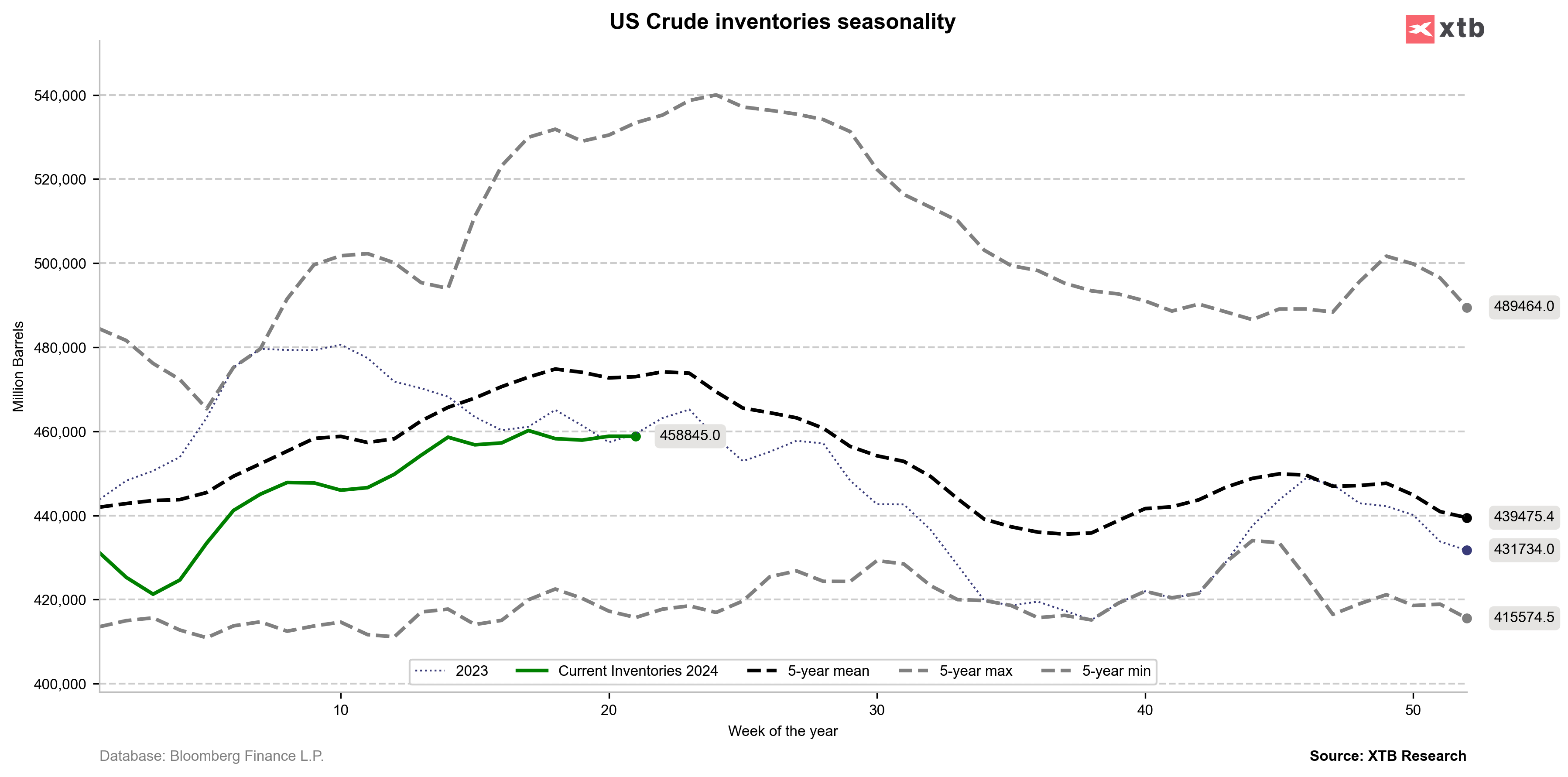
Start investing today or test a free demo
Create account Try a demo Download mobile app Download mobile appOil inventories in the US are at the same level as last year. The increase in inventories was significant, but at the same time slower than the 5-year average suggests, so statements about the weakness of US demand may be somewhat exaggerated. Source: Bloomberg Finance LP, XTB
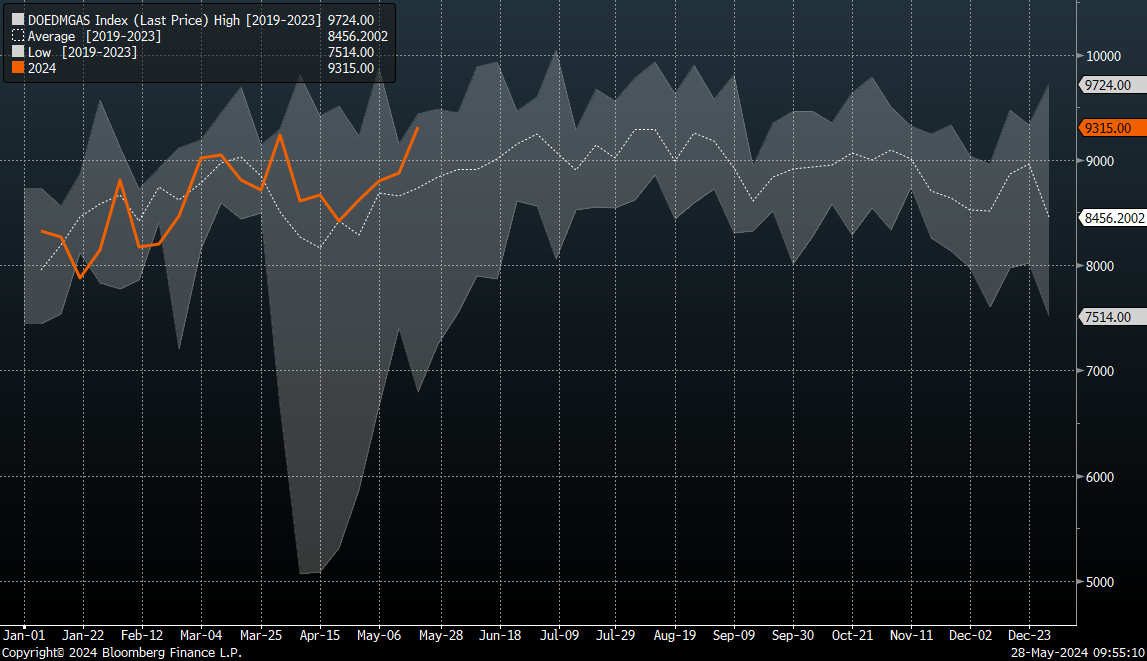
Data on petroleum products delivered to the US market suggest a potential increase in demand recently. At the same time, there is no strong increase in the inventories of petroleum products themselves. Source: Bloomberg Finance LP, XTB.
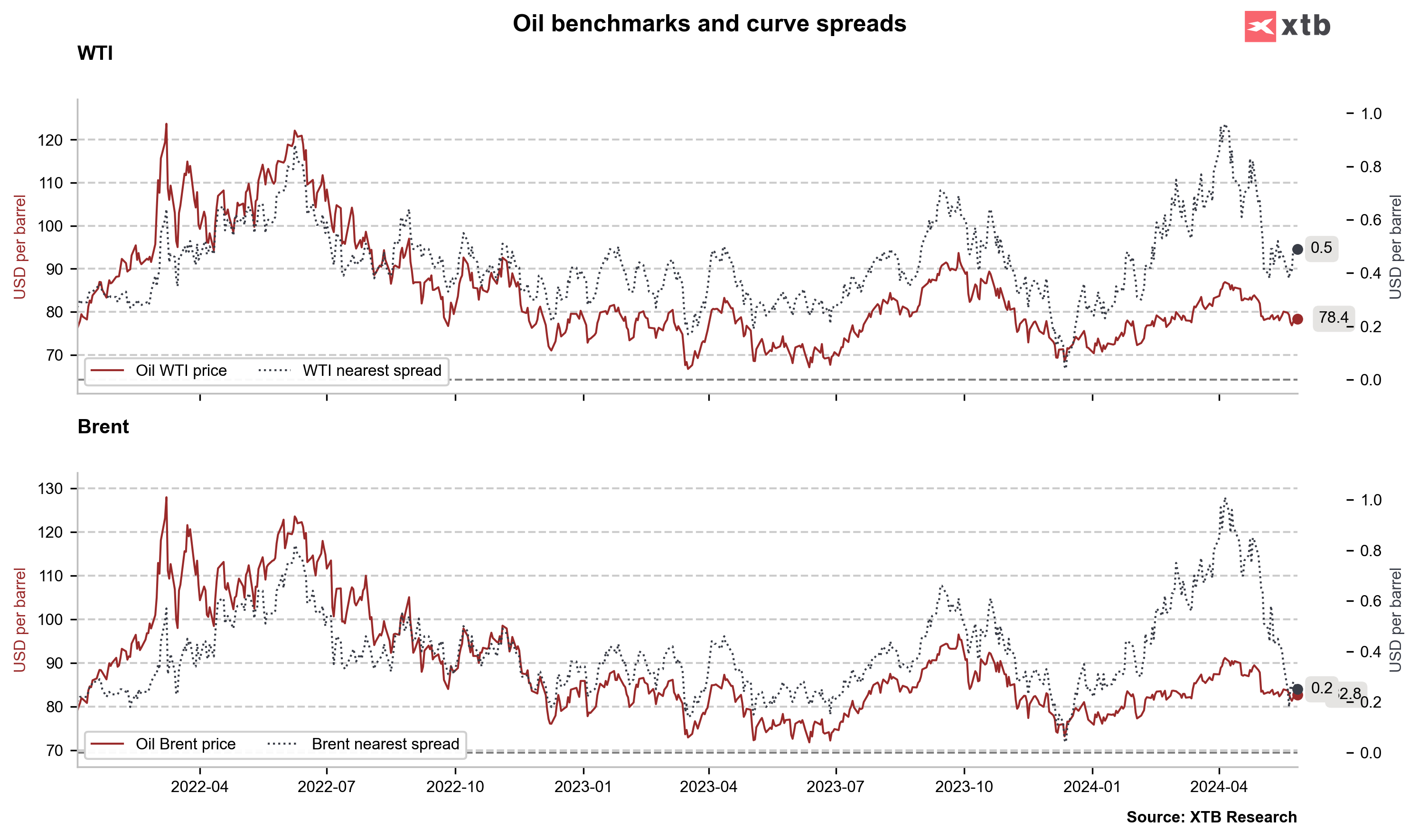
Backwardation in the oil market has decreased significantly. This potentially indicates Brent oil being oversold. On the other hand, this data may also suggest a reversal of the forward curve, which would indicate an excessive amount of oil in the market. Source: Bloomberg Finance LP, XTB
Silver
- Silver continues to rise and gains the most among all precious metals
- There is a clear increase in speculative long positions on silver
- The gold-to-silver price ratio continues to decline. The next target is around 68, which could mean a valuation of silver around $34-35 per ounce, assuming gold prices remain in the range of $2350-2400
- UBS indicates that the target for gold in September is $2500 and $2600 by the end of the year, which is linked to strong demand from China. Higher gold prices also have the potential to continue the rise in silver, which is characterized by higher volatility than gold
- Unlike gold, silver market remains in a strong deficit, which also applies to platinum and palladium. The deficit in silver, potential interest rate cuts by the Fed in Q3 or Q4, and maintaining high gold prices should favour silver going forward
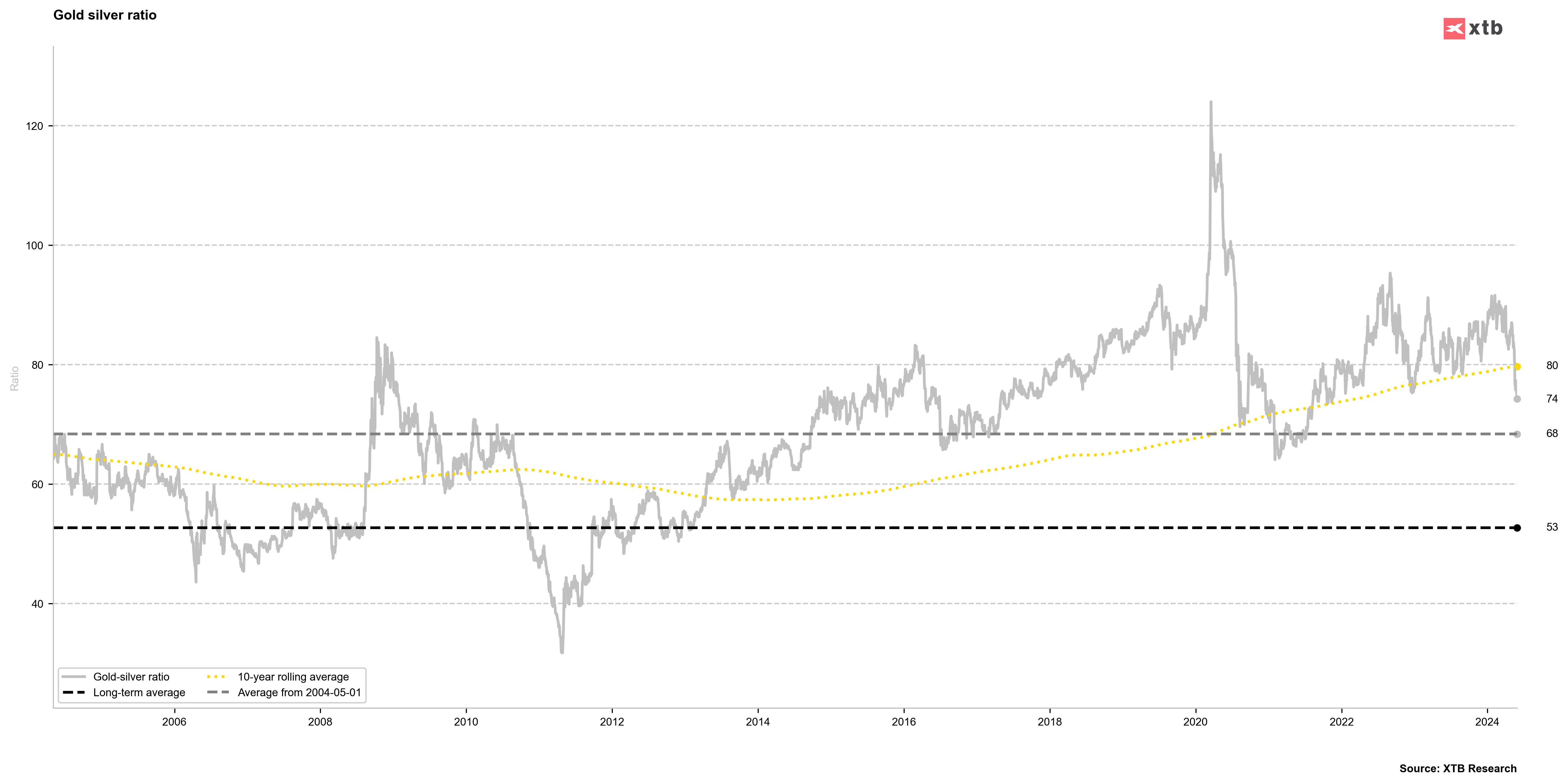
The gold-to-silver price ratio continues to decline significantly. The next target is the level of 68, which at current gold valuations should result in silver prices around $34-35 per ounce. Source: Bloomberg Finance LP, XTB.
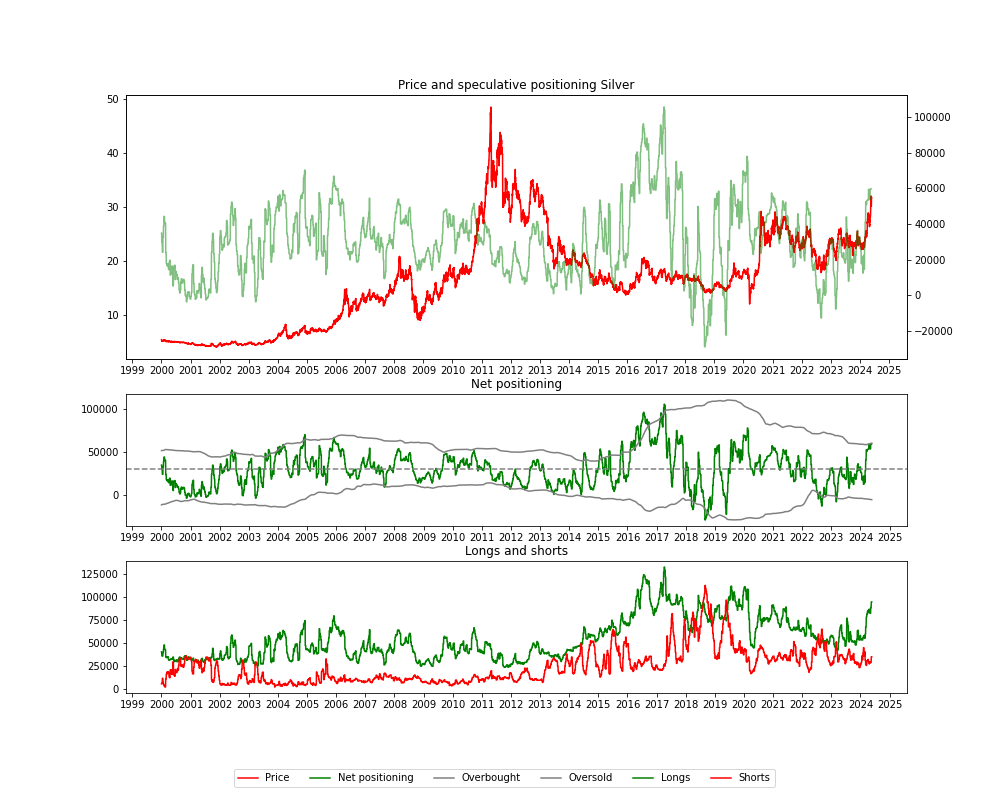
We see a further increase in speculative positions on silver, which suggests that the upward movement may not be exhausted. At the same time, net positions show an initial level of overbought conditions, although the number of longs is far from the extreme highs of 2017 or 2020. Source: Bloomberg Finance LP, XTB
Natural Gas
- Comparative inventories have recently shown a potential signal of recovery. However, significantly increased demand and production limitations are needed for comparative inventories to clearly decrease, justifying further price increases
- Seasonality in the gas market, however, suggests that the upward movement may be nearing its end
- Gas production has rebounded again, even despite the continued significant decline in drilling rigs. It is worth remembering that gas is also extracted with oil
- Gas has reached levels associated with the previous major upward wave, which may also indicate technical overbought conditions
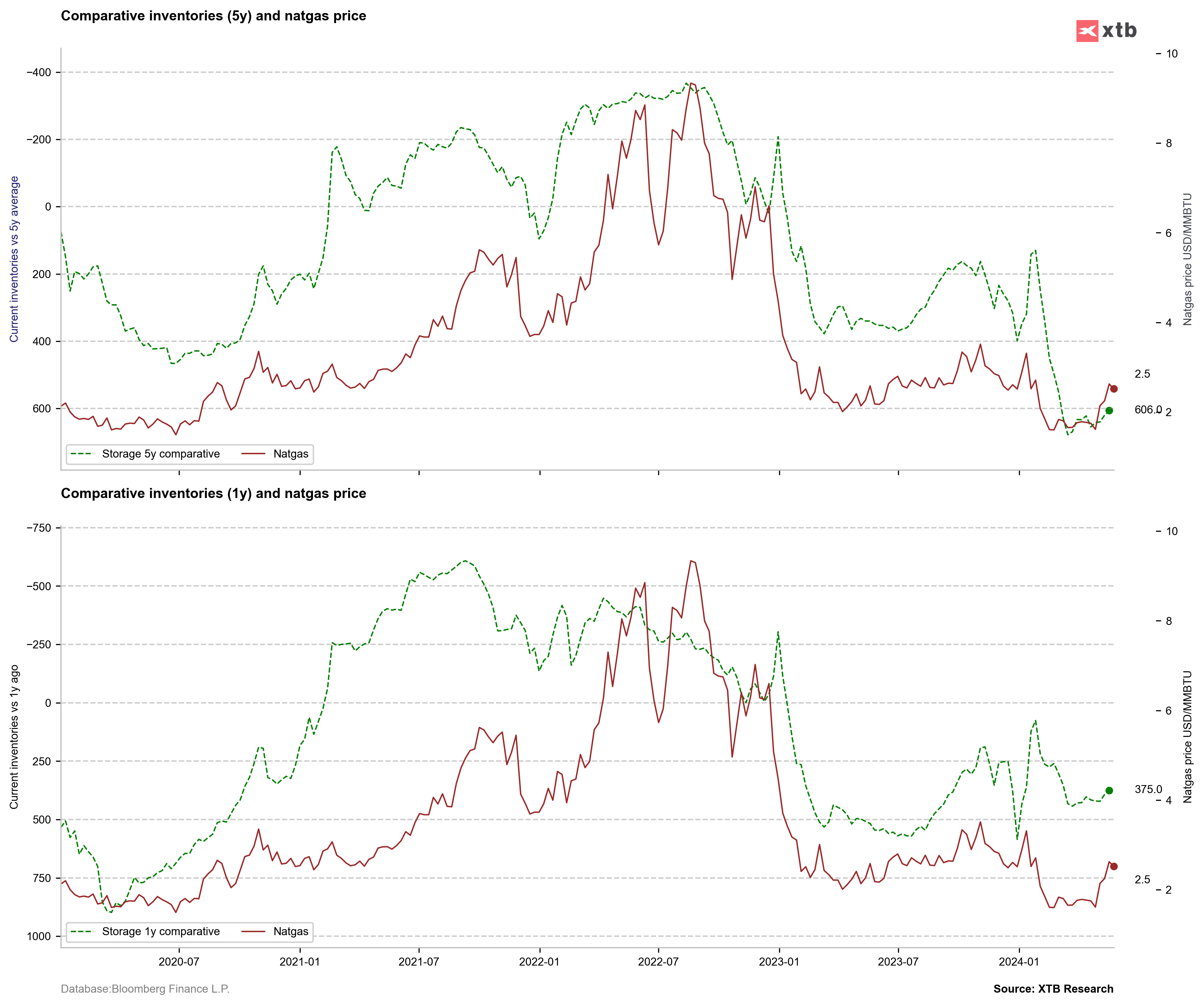
Comparative inventories potentially indicate the possibility of continuation of the upward trend on natural gas, but this would require significantly greater demand in the near future. The highest demand associated with the summer season will occur in July and August. Source: Bloomberg Finance LP, XTB.
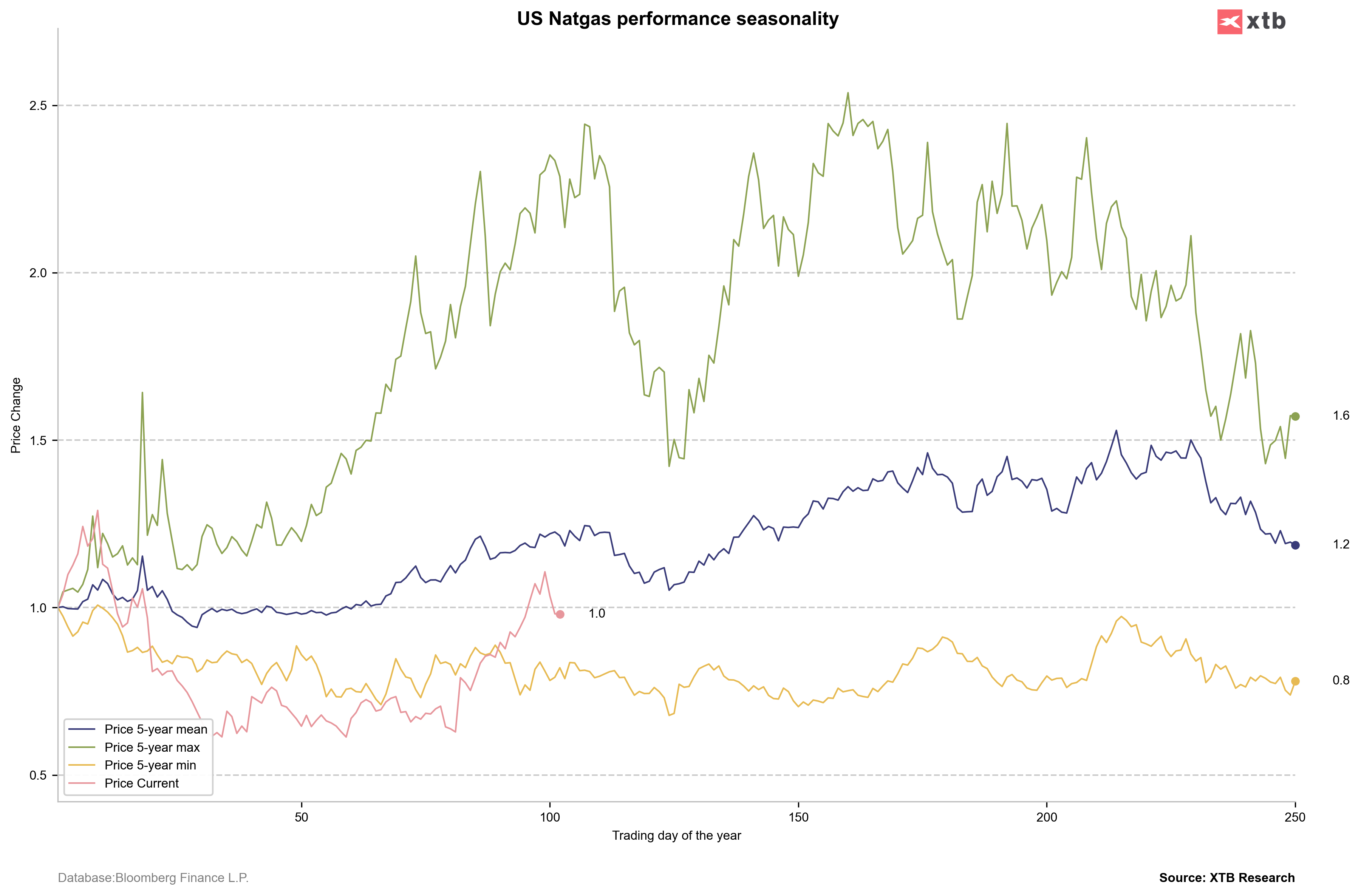
Seasonality indicates that the upward movement may be nearing its end. Source: Bloomberg Finance LP, XTB.
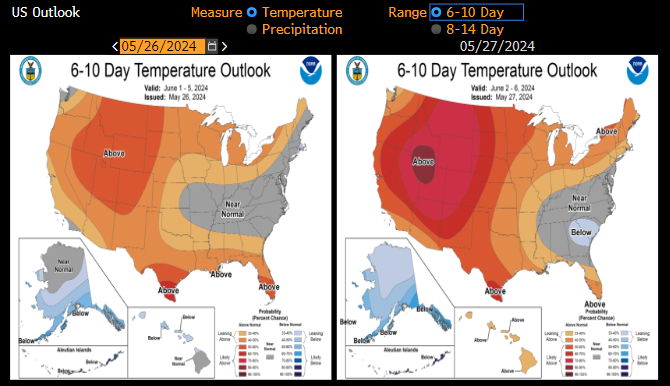
Temperatures in the US are significantly higher than usual. However, the number of cooling degree days in the USA does not deviate significantly from the average. The peak demand for cooling will take place at the turn of July and August. Source: Bloomberg Finance LP, XTB
Cotton
- Cotton is losing steam after a strong two-day rebound last week
- The rebound may, however, be speculative in nature, as there are no significant news about increasing exports from the US. Cotton sales are lower than last year
- The price rebound may also be related to the approaching hurricane season in the US, which could harm local crops
- The first report this year on the quality of cotton crops is to be published today. Last year, the quality was very low compared to the 5-year average
- In terms of positions, short positions are still being increased. Short positions are at their highest level since 2019. Net positions are negative again, for the first time since the beginning of this year
- Cotton production in the 24/25 season is expected to rebound compared to last year, mainly due to the US (although this will depend on the weather). On the other hand, production is also expected to rebound in Brazil
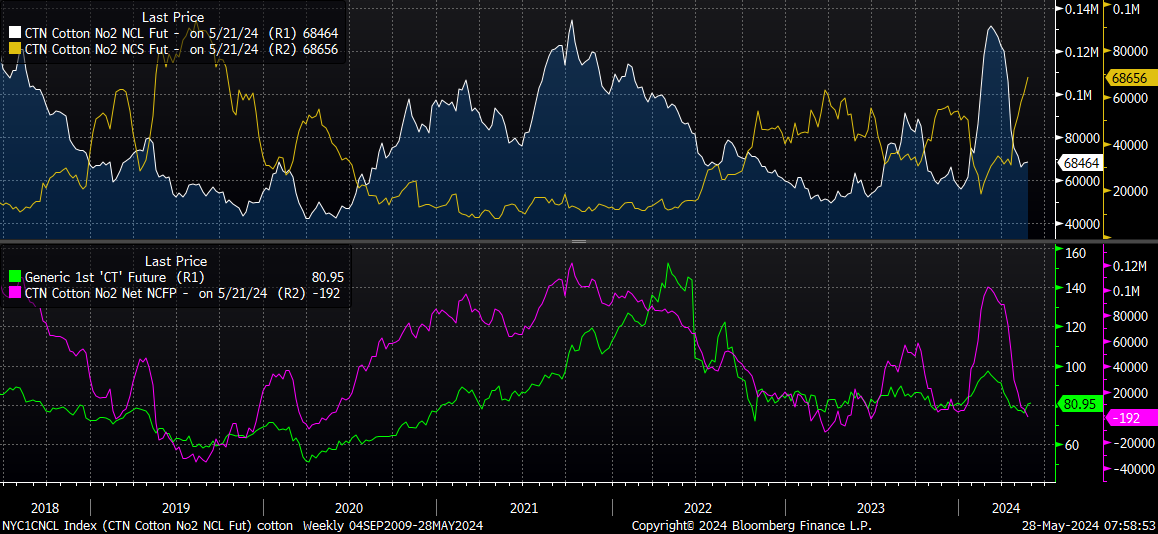
Speculative positions are near the lows seen at the turn of the year. However, looking at 2019 and 2023, the number of short positions may still increase relative to long positions. Everything will depend on production prospects, as demand may remain limited at the moment, considering, among other factors, low oil prices. Source: Bloomberg Finance LP, XTB.
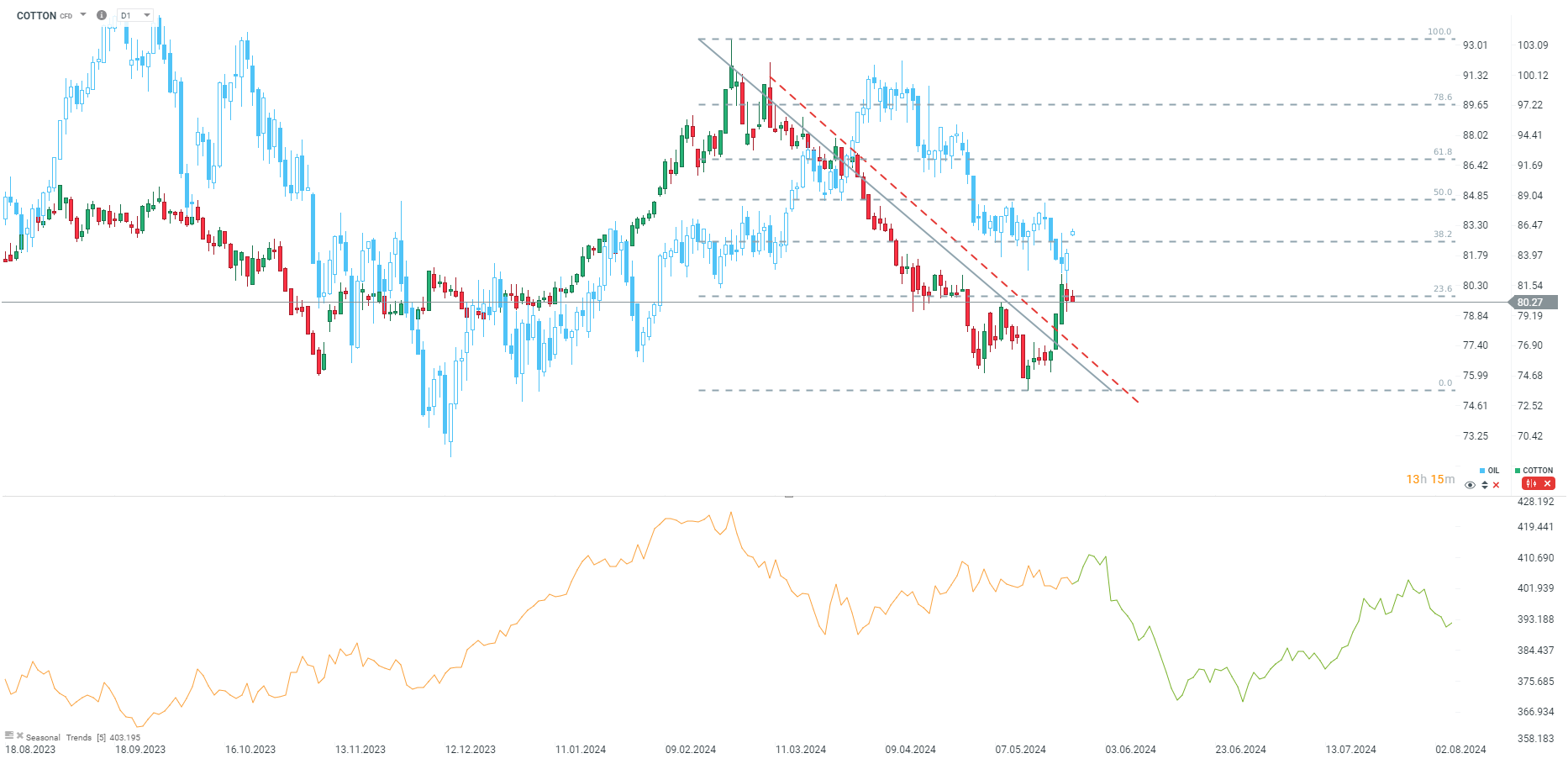
The price saw a strong rebound, but seasonality indicates potential declines. Nevertheless, if the report on crop quality shows weak data, the likelihood of continuing the upward movement may increase. The potential target for the move could then be around 84 cents per pound. Source: xStation5
This content has been created by XTB S.A. This service is provided by XTB S.A., with its registered office in Warsaw, at Prosta 67, 00-838 Warsaw, Poland, entered in the register of entrepreneurs of the National Court Register (Krajowy Rejestr Sądowy) conducted by District Court for the Capital City of Warsaw, XII Commercial Division of the National Court Register under KRS number 0000217580, REGON number 015803782 and Tax Identification Number (NIP) 527-24-43-955, with the fully paid up share capital in the amount of PLN 5.869.181,75. XTB S.A. conducts brokerage activities on the basis of the license granted by Polish Securities and Exchange Commission on 8th November 2005 No. DDM-M-4021-57-1/2005 and is supervised by Polish Supervision Authority.

